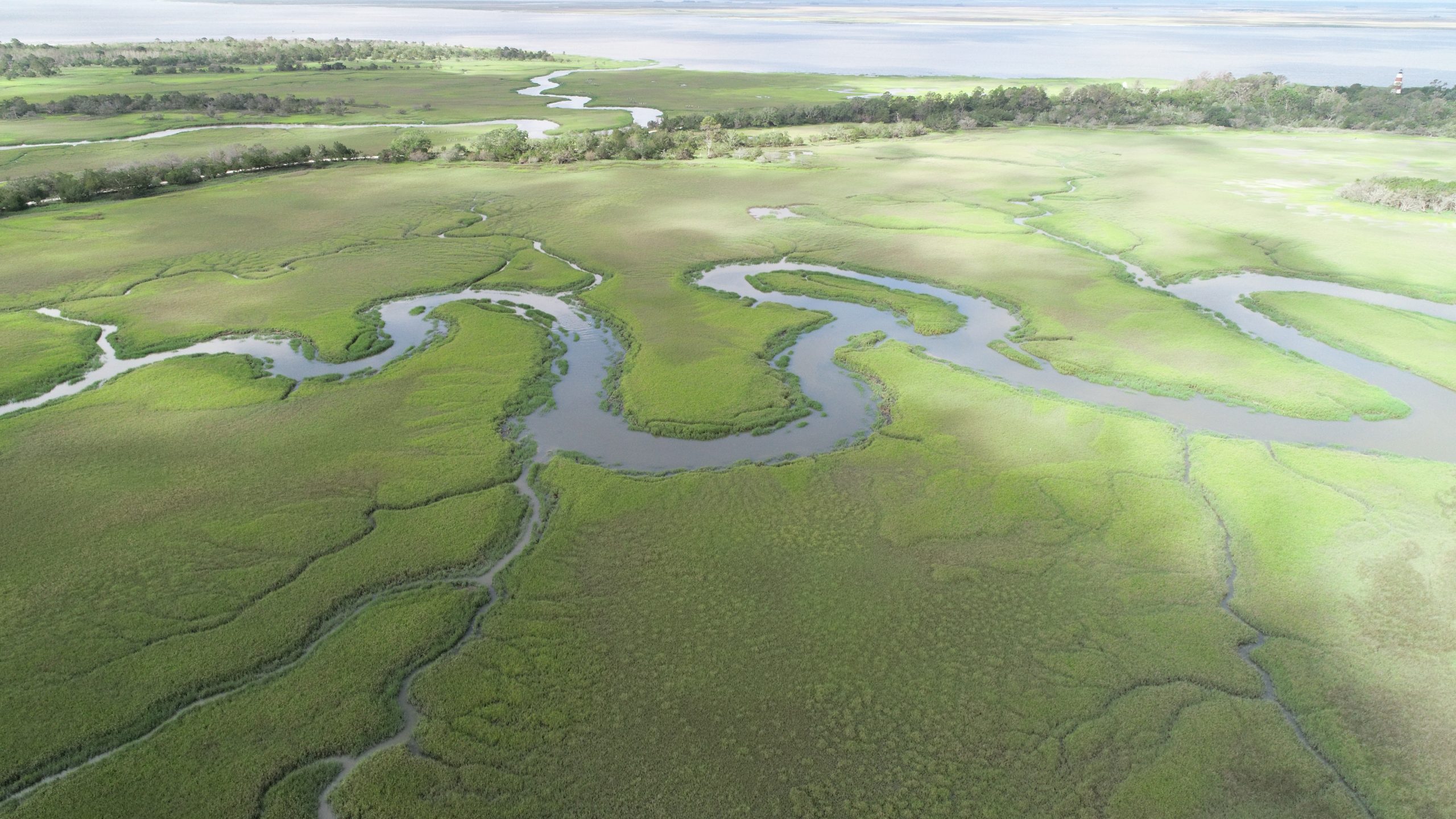GAINESVILLE, Fla. — A recent study from the University of Florida found that sea level rise—combined with the burrowing and grazing activities of Sesarma, a native marsh crab—are causing salt marshes across the U.S. South Atlantic Coast to rapidly fracture and reorganize.
These findings, recently published in the Proceedings of the National Academy of Sciences, highlight the profound importance of this marsh crab in controlling how salt marshes are responding to sea level rise, challenging the long-standing paradigm that feedbacks between water flow, sediment processes and plants alone shape salt marsh evolution and response to climate change pressures, like sea level rise.
Researchers in the Engineering School of Sustainable Infrastructure & Environment (ESSIE) within the Herbert Wertheim College of Engineering, led by associate professor Christine Angelini, Ph.D., and doctoral student Sinead Crotty found that Sesarma are accelerating the rate at which salt marsh tidal creeks lengthen in response to sea level rise, which is causing marshes to rapidly transform from expansive, contiguous grasslands to highly fractured patches of marsh.
“This crab, which excavates deep, complex networks of burrows, thrives where tidewaters rapidly flush across the marsh surface, and therefore, congregate in large numbers on the heads of tidal creeks where water flows are fastest. When they congregate in high-density fronts, they turn marsh soils into Swiss cheese as a result of all of their burrowing and overgraze marsh cordgrass,” Dr. Angelini said. “Through these activities, Sesarma is causing tidal creeks to rapidly incise across marshes, and is enabling predators, like red drum and blue crabs, to freely access the marsh, driving huge declines in the density of snails, mussels and other marsh invertebrate prey.”
Salt marshes occur along much of the U.S. East Coast, where land meets the sea. In the southeastern U.S. spanning North Florida to the Carolinas, where the study was conducted, there are nearly 2.5 million acres of salt marsh. This study estimates that these intertidal grasslands are under water for about an hour more a day now compared to 1999 as a result of sea level rise, a regime shift that is softening marsh soils to levels perfect for Sesarma burrowing.
“Salt marshes are vital nursery grounds for dozens of harvested species such as sea trout, red drum fish and blue crab. They clean coastal waters through their removal and sequestration of nitrogen and other pollutants, store large amounts of carbon and thereby mitigating climate change, and provide invaluable storm protection for coastal infrastructure through their stabilization of shorelines and baffling of storm surge and waves,” Dr. Angelini said. “The feedbacks that we discovered in this work suggest we may be losing these systems far faster than we thought.”
Andrew Altieri, Ph.D., ESSIE assistant professor, says direct human impacts to salt marshes, such as development and climate change, still need to be addressed.
“We need to address climate change by studying and understanding nature so that we can see how we fit into the big picture,” Dr. Altieri added. “We knew that sea level rise was a threat to marshes, but these crabs flipped a switch that put loss of the marsh into overdrive. These synergies in nature would be overlooked if not for careful monitoring and experiments which are needed to catch problems early on and mitigate their impact on salt marshes.”
In order to combat these changes, Dr. Angelini says that individuals need to look at it from a two-pronged approach from a local and global perspective.
“At the local scale, concerted efforts to help support coastal wetlands such as improving sediment delivery to the coast by removing dams and levees are needed to give these ecosystems a chance to survive in the face of sea level rise. On a global scale, we need collective action to reduce our carbon footprint from the individual to global human population level to counteract global warming that underpins sea level rise,” Dr. Angelini said.
This recent study stems from a line of research that Dr. Angelini started 12 years ago in collaboration with Mark D. Bertness, Ph.D., a professor emeritus of ecology and evolutionary biology at Brown University, which has collectively revealed that Sesarma is shaping the evolution of salt marshes from Florida to Massachusetts.
—
The Engineering School of Sustainable Infrastructure and Environment (ESSIE) is a school within the Herbert Wertheim College of Engineering at the University of Florida. The School is comprised of the Department of Civil and Coastal Engineering and the Department of Environmental Engineering Sciences. There are 14 areas of research between both departments.
Reba Liddy
352-392-7344
rhernandez@eng.ufl.edu
###
